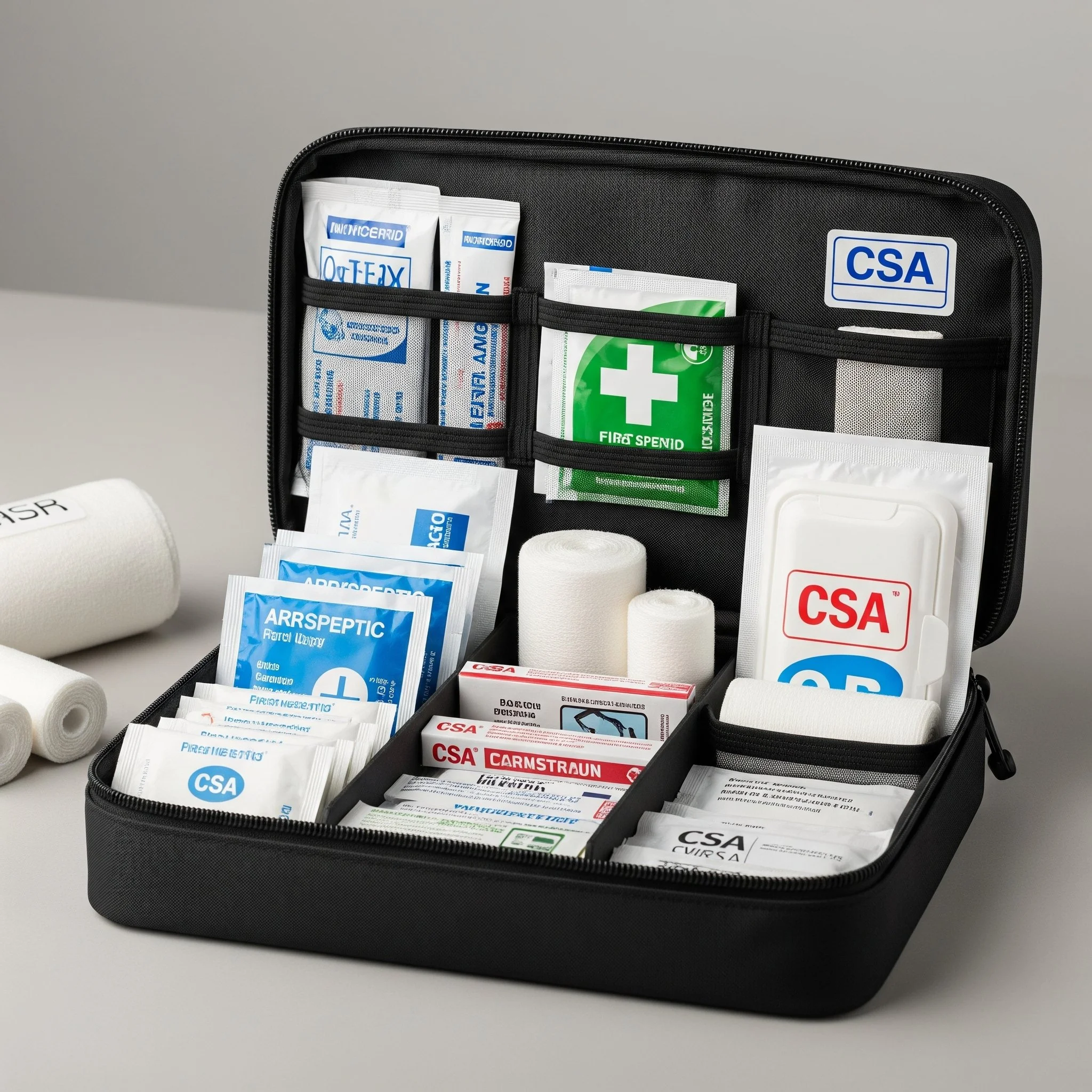The Essential Workplace First Aid Kit: What You Need to Know
Just as a skilled tradesperson needs the right tools, a competent first aid attendant needs a properly stocked and maintained first aid kit. In the Canadian workplace, the first aid kit isn't merely a box of bandages; it's a critical component of your overall safety program, a legal requirement, and often the first line of defense in an emergency. Ensuring your workplace kits are up-to-date and compliant can significantly impact the outcome of an injury or illness.
At Ready 4 Everything Training and Supplies, we understand that managing workplace safety involves more than just training – it requires the right equipment, maintained to the highest standards. That's why we guide businesses through the intricacies of Canadian First Aid Kit standards, particularly the CSA Z1220-17.
The Canadian Standard: CSA Z1220-17
The Canadian Standards Association (CSA) has developed a national standard, Z1220-17, "First aid kits for the workplace," which provides comprehensive guidance on the content, classification, and maintenance of first aid kits. While some provinces may have their own specific regulations, many are adopting or aligning with this CSA standard, making it a crucial benchmark for Canadian businesses. This standard categorizes kits into three types based on the environment and potential hazards:
Type 1: Personal First Aid Kit
Purpose: Designed for individual workers who are often working alone or in remote areas.
Contents: Basic wound care, pain relief, and personal protective equipment (PPE).
Gloves (at least 2 pairs)
Antiseptic wipes
Assorted bandages (adhesive strips, knuckle, fingertip)
Sterile gauze pads
Adhesive tape
Roller bandage
Pain relievers (e.g., ibuprofen, acetaminophen)
Safety pins
Tweezers
Small scissors
First aid guide
Why it's important: Ensures that individuals working alone or in isolated locations have immediate access to essential supplies for minor injuries, which can be critical when help is not readily available.
Type 2: Basic First Aid Kit
Purpose: For general workplaces with low-risk environments and a small number of employees.
Contents: Builds upon the Type 1 kit, with additional supplies for more common workplace injuries.
All contents of Type 1, but in larger quantities.
Larger sterile gauze pads
Triangular bandages
Eye pads
Burn dressing
CPR breathing barrier
Instant cold pack
Splinter forceps
Penlight
Medical waste bag
Why it's important: Provides a more comprehensive response capability for typical office or retail environments where injuries might be more varied than simple cuts.
Type 3: Intermediate First Aid Kit
Purpose: For workplaces with higher risk hazards (e.g., construction, manufacturing, industrial sites) or a larger number of employees.
Contents: Contains a wider range and larger quantities of supplies to manage more severe injuries, including trauma.
All contents of Type 2, but in significantly larger quantities.
Trauma pads/abdominal pads
Pressure bandages
Roll gauze (various sizes)
Elastic bandages
Saline solution for wound irrigation/eye wash
Trauma shears
Emergency blankets
Eye wash stations
Surgical masks (if applicable)
Splinting materials
Why it's important: Essential for environments where the potential for serious injuries (e.g., severe bleeding, fractures, major burns) is higher, requiring more robust and diverse supplies.
Beyond the Basics: Specialized Contents
Depending on your specific workplace hazards, you may need to supplement your CSA-compliant kits with additional items:
Automated External Defibrillator (AED): Highly recommended for most workplaces, especially those with public access or large employee populations.
Naloxone Kit: For workplaces where opioid overdose is a recognized risk (e.g., some industrial sites, public-facing roles).
Burn Sheets/Dressings: For environments with high burn risks.
Eye Wash Station: If chemicals or foreign objects are a significant eye hazard.
Spill Kits: For managing chemical or biological spills.
Specific Medications: E.g., Epinephrine auto-injectors if employees have known severe allergies and permission to carry/administer.
Maintenance: Keeping Your Kit "Ready 4 Everything"
A first aid kit is only effective if it's properly maintained. This involves:
Regular Inspection: Designate a responsible person to inspect kits frequently (e.g., monthly, or after each use) to ensure all contents are present, in good condition, and within expiry dates.
Replenishment: Immediately replace any used or expired items. Keep a clear inventory list inside the kit for easy tracking.
Accessibility: Ensure kits are always in an easily accessible, well-lit location, clearly marked with a first aid symbol. All employees should know where kits are located.
Cleanliness: Keep the kit and its contents clean and organized.
Environmental Protection: Store kits in a cool, dry place, protected from direct sunlight and extreme temperatures.
Ready 4 Everything: Your Partner in Compliance and Preparedness
At Ready 4 Everything Training and Supplies, we understand the complexities of workplace safety regulations. We not only provide the comprehensive first aid training your team needs but also offer guidance on selecting and maintaining the correct first aid kits to meet or exceed CSA standards and provincial regulations. Our online safety training management platform can further streamline your inventory management, tracking of expiry dates, and overall compliance efforts, ensuring your workplace is always equipped and prepared.
A well-stocked, compliant first aid kit isn't just a requirement; it's a testament to your commitment to employee safety and a vital tool in mitigating the impact of workplace incidents.
Your Action Item: Is your workplace first aid kit truly up to standard? Don't leave safety to chance. Sign up for online safety training management for your company to ensure your first aid kits are compliant, well-maintained, and ready for any emergency, protecting your employees and your business.

